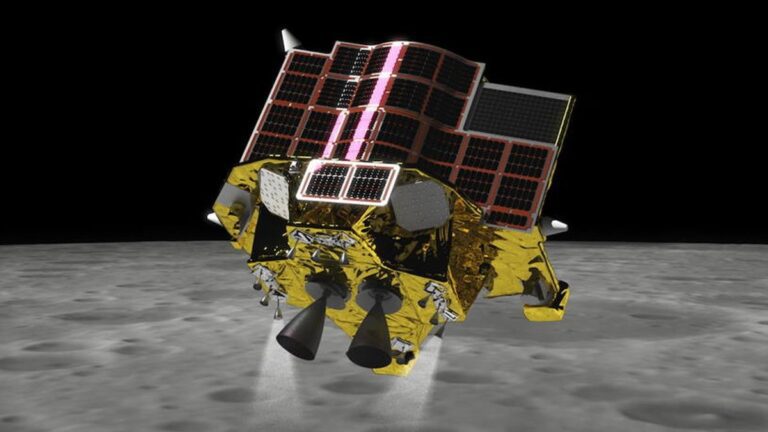
[ad_1]
Japan is all set to launch a pair of exciting lunar and space science missions on a single rocket.
The Japanese Aerospace Exploration Agency (JAXA) will send the Smart Lander for Investigating Moon, or SLIM, to the moon to demonstrate accurate lunar landing techniques while also placing the X-Ray Imaging and Spectroscopy Mission (XRISM) in low Earth orbit on the same launch to study extreme celestial phenomena.
SLIM, also known as “Moon Sniper” in Japanese, will take it slow to the moon. It is expected to arrive in lunar orbit 3 to 4 months after launch. After a month or so in orbit, the spacecraft will make its 20-minute descent to the surface, aiming to land within 328 feet (100 meters) of its intended target. This is a key part of the mission, as accuracy of conventional landers is on the order of several kilometers.
Launch of the H-IIA rocket carrying SLIM and XRISM is currently set for 8:26 a.m. ET on Aug. 27 (0026 GMT or 9:26:22 a.m. JST on Aug. 28). JAXA will provide live coverage via Youtube.
Related: Missions to the moon: Past, present and future

SLIM’s launch was set for early on Aug. 26, but bad weather at Japan’s scenic coastal Tanegashima Space Center has pushed back the launch at least until Monday (Aug. 27). The reserved launch period runs through to Sep. 15.
The spacecraft will aim to land on the slope of Shioli Crater, a relatively fresh, 984-foot-wide (300 m) impact feature within Mare Nectaris, at 13 degrees south latitude and 25 degrees east longitude on the near side of the moon.
SLIM will weigh 1,300 pounds (590 kilograms) at launch, with roughly two-thirds of this mass being fuel. Notably it will use five crushable, 3D-printed semi-circular aluminum lattice legs to absorb the impact of landing and help it land on a slope.

If successful, Japan will become just the fifth country to successfully soft-land on the moon. The launch comes days after India became the fourth with its Chandrayaan-3 mission.
The main mission aims are demonstrating the “pinpoint” landing, while also proving lightweight systems for more economical exploration of the solar system. It also carries science instruments in the form of a multiband camera for assessing the local mineralogical environment — with particular interest in olivine, which may have originated in the moon’s mantle — and a small laser retroreflector array.
[打ち上げ日延期について その2]H2Aロケット 47号機は天候の影響により打ち上げ日が8/28に延期されました。打ち上げ日まで待つ間にフェアリング格納前のSLIMをご覧ください🚀#JAXA #SLIM #たのしむーんhttps://t.co/tmzGw7CdP1https://t.co/iBRTVJqYVc pic.twitter.com/dkkOBdTPcVAugust 25, 2023
XRISM is a collaboration between NASA and JAXA and with assistance from the European Space Agency (ESA). It will observe X-rays released by extreme phenomena such as hot gas clouds enveloping galaxies and blasts from black holes.
The spacecraft carries a wide-field X-ray imager and a cryogenic high-resolution X-ray spectrometer. Data from the observatory will help scientists delve into the evolution of the universe.
“X-ray astronomy enables us to study the most energetic phenomena in the universe,” Matteo Guainazzi, ESA project scientist for XRISM, said in a statement.
“It holds the key to answering important questions in modern astrophysics: How the largest structures in the universe evolve, how the matter we are ultimately composed of was distributed through the cosmos, and how galaxies are shaped by massive black holes at their centers.”
XRISM will be doing some of the work intended for Hitomi, Japan’s X-Ray astronomy probe which launched in Feb. 2016 but was lost a month later due to attitude control issues.
The observatory is intended to orbit at 342 miles (550 kilometers) above Earth, where it is expected to survey the heavens for three years, until the cooling helium tanks which keep it at an operational temperature of -459.58 °F (-273.10 °C), run out. The mission may, however, be extended through mechanical cooling.
[ad_2]